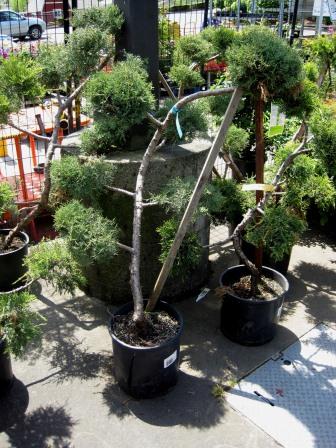Yesterday I gave a presentation at an Urban Forestry symposium here in Seattle. One of the sidebar conversations I had came from a urban forester who had (to my mind, anyway) a different way of looking at urban street trees. I’ve bemoaned for years that our trees die far too young – we plant species that should live for decades or even centuries, only to watch them fail and die in a fraction of that time. Urban conditions take their toll: compacted, poor soils, reduced sunlight, increased temperatures, etc. It’s not surprising that our trees just don’t hang on as long as they should.
But…what would happen if we took the “planned obsolescence” route? In other words, rather than planting species that have long life spans and somehow expecting them to overcome all that the urban environment flings at them, how about choosing trees with shorter life spans? Sure, there will still be replacement costs, but they will be expected and planned for.
So – should we continue to fight against ridiculous ordinances, unrealistic planting plans and unworkable tree selection lists? Or should we lower our expectations of our urban forests?

Thoughts?
(And now I’ve gone completely off track mentally, remembering the “Lowered Expectations” skits on MadTV. Feel free to watch one!)








 Rootstock revolt. The surest way to kill off your grafted scion.
Rootstock revolt. The surest way to kill off your grafted scion. A botanical bow? Or a horticultural harp?
A botanical bow? Or a horticultural harp? And check out the pot! If there’s enough root mass in there to crack the pot, you can bet it’s long past its potting up date.
And check out the pot! If there’s enough root mass in there to crack the pot, you can bet it’s long past its potting up date. Love broccoli? Then why not have a broccoli tree???
Love broccoli? Then why not have a broccoli tree??? Looking for a maintenance nightmare? Then this beheaded beauty is for you!
Looking for a maintenance nightmare? Then this beheaded beauty is for you! Don’t ever unwrap this plant. It will immediately fall over and/or break. Just keep it as is – call it your turtleneck tree.
Don’t ever unwrap this plant. It will immediately fall over and/or break. Just keep it as is – call it your turtleneck tree.